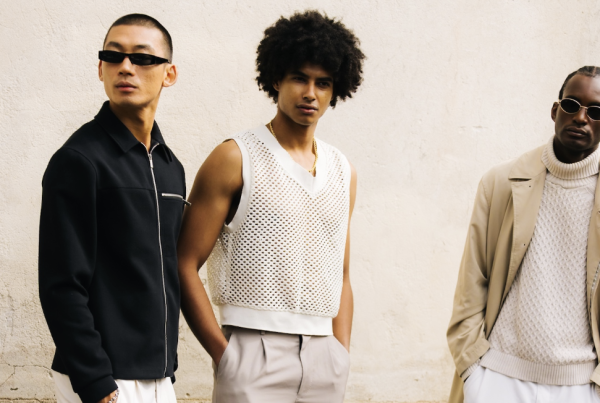
Cannabis which is also popularly known as marijuana has found a secure place in everyone’s heart. The consumer of weed is increasing with time and with its great application being discovered. It has been popularly used due to its medicinal properties. But do you know that you can actually find it in the fashion world as well? Let’s discover the connection between weed and the fashion industry in this blog.
With the unique properties that marijuana has, it has been utilized in the fashion world. Sustainability with its eco-friendliness contributes to more growth of weed usage in the fashion industry. From vegan sustainable textiles to cannabutter-inspired designs – here’s why and how weed has taken over the world of fashion.
Hemp as a Sustainable Textile
Hemp or cannabis has been utilized as a sustainable textile in the fashion industry. It is not only sustainable but durable as well which makes this amazing herb grow quickly as a special textile. It is eco-friendly fiber which means that it requires very less resources such as water to grow at its fullest. As compared to other fibers like cotton, this made it an additional feature of hemp. Biodegradable nature also made it a good choice to use without harming the environment.
Why Hemp?
Environmentally friendly production: As discussed, hemp needs a low amount of water to grow and very few pesticides as compared to other crops. This made it a good fiber to grow with fewer resources and a high yield. So if you are looking for a sustainable fibre, hemp can be your friend in this race of fashion industry.
Durability: Are you looking for a natural fiber with great strength and durability? Hemp is all yours. Hemp fibers are great in strength and durable. So if you wear hemp clothes, you will not love wearing any other.
Breathable and Versatile: Hemp is naturally breathable and absorbs dye well, making it versatile for various clothing styles, from jeans to dresses.
Popular fashion brands like Patagonia and Levi’s have already started incorporating hemp blends in their collections, proving the sustainability and durability of the fabric.
Weed-Inspired Designs in Fashion
Cannabis culture and fashion could never be separated, it was a symbiotic relationship that occurred naturally but only in the recent years this has become part of the mainstream. Weed-inspired designs -whether it’s prints filled with cannabis leaves, or slogans promoting the cannabis culture- is rising in popularity fast; particularly within streetwear and linked to a lifestyle of relaxation, creativity and individuality by a young forward-thinking generation.
Cannabis-Inspired Aesthetics:
- Streetwear Influence: Weed themed logos, graphics, and accessories are finding popularity among brands looking to appeal to streetwear enthusiasts and younger demographics.
- Subtle or Bold Statements: Have you seen clothing making bold statements such as subtle leaf embroidery on a hat or full weed-leaf patterned shirts? These all are inspired by hemp. From understated designs to bold, hemp clothing allows people to express their stance on cannabis openly.
- Normalization of Cannabis: Weed-inspired fashion is helping to destigmatize cannabis by making it more visible and accepted in everyday culture.
- Cannabis in High Fashion
High-end fashion designers are also starting to embrace cannabis themes, with some creating entire collections inspired by the plant. At fashion shows, cannabis-inspired pieces have made appearances on the runway, reflecting a shift in societal perceptions and an embrace of weed culture as a chic, modern aesthetic.
Fashion Weeks & Runways:
- Iconic Collections: Designers are crafting collections with cannabis-inspired fabrics and accessories, making a statement about the fusion of luxury with natural elements.
- Green as a Style Statement: Fashion houses are embracing “green” not just in color but in concept, often using cannabis motifs in high fashion to symbolize freedom, rebellion, or natural elegance.
Growing Tips for High-Quality Cannabis Plants in the Fashion Industry
One of the environmental factors that cannabis growers need to dial in is Vapor Pressure Deficit (VPD). VPD does sound like a tech-heavy term, but it’s also a key component to getting your plants to thrive and produce. If you want to perfect your growing environment, then learning what VPD is and how to use a VPD chart can help.
Today we’ll cover everything you need to know about VPD, including why it matters for growing great cannabis. Let’s get started!
What is VPD?
Vapor Pressure Deficit (VPD) is the difference between the amount of moisture in the air and how much moisture the air can hold when it’s saturated. In other words, VPD tells you how much moisture your plants can pull from the air through their leaves, which will affect their transpiration rate and overall growth. You can click here for more information.
VPD is influenced by two primary environmental factors:
- Temperature – As temperature increases the air can hold more moisture.
- Relative Humidity (RH): The amount of moisture the air holds relative to the maximum it could hold at that temperature, expressed as a percentage.
- Temperature and humidity interact to create vapor pressure, which dictates how much water your plants lose through their leaves. VPD management means finding a temperature/humidity sweet spot for optimal growth.
Why is VPD Important for Cannabis?
VPD is important to understand because it directly affects:
- Transpiration: Cannabis plants use transpiration to pull nutrients and water from the soil. A too-low or too-high VPD will either dry out the plants or slow down transpiration, causing nutrient lockouts or root issues.
- Stomatal Behavior: The stomata are small pores on the plant’s leaves that govern gas exchange. Knowing the right VPD guarantees the stomata stay open only as far as needed to take in nutrients without losing excessive moisture.
- Plant Growth and Yield: The right VPD will ensure you achieve maximum growth by ensuring your plant can also uptake water and nutrients efficient. If the VPD is too high (leaf stomata closing up – poor CO2 uptake) or too low (poor root system) your plant will struggle, which results in reduced yield or questionable quality buds.
Ideal VPD for Each Growth Stage
The perfect VPD for cannabis plants will differ as they progress through their lifecycle. Check out the ranges based on each phase of growth here:
Seedling Stage (VPD: 0.4-0.8 kPa)
Seedlings are very fragile and they need high humidity as well as moderate temperature to grow. VPD should be kept low so that seedlings absorb water directly from their leaves as they don’t have a strong root system.
Vegetative Stage (VPD: 0.8-1.2 kPa)
The vegetative stage requires a bit higher VPD, to encourage transpiration, nutrient uptake and vigorous growth. Temperature of 70-85°F (21-29°C) and relative humidity of 50-70% works the best.
Flowering Stage (VPD: 1.2-1.6 kPa)
Late Flowering (VPD: 1.6-2.0 kPa)
Late flowering is when you want to lower humidity even more so as not to get bud rot, and dense buds produce better resin and final bud quality with a higher VPD. Temps 60-75F (16-24C) RH can go as low as 30-40% late flower.
Final Thoughts
Cannabis is making a lasting impact on the fashion industry, and this influence goes beyond aesthetics. From sustainable hemp textiles to CBD-infused wellness products and weed-inspired streetwear, cannabis is bringing fresh perspectives to fashion while addressing modern-day concerns like environmental sustainability, mental wellness, and ethical production. Mastering VPD can greatly improve the health, growth, and production of your cannabis. But that’s a lot to take in, right? Well, fortunately, using a VPD chart is much easier. It essentially helps you understand that temperature and humidity work together and you need to get them both at an ideal level for your plant.

























































